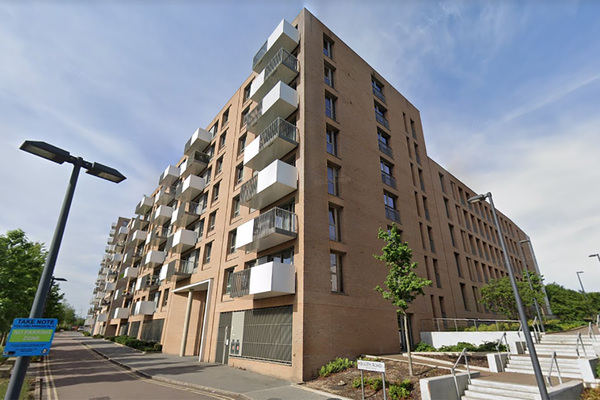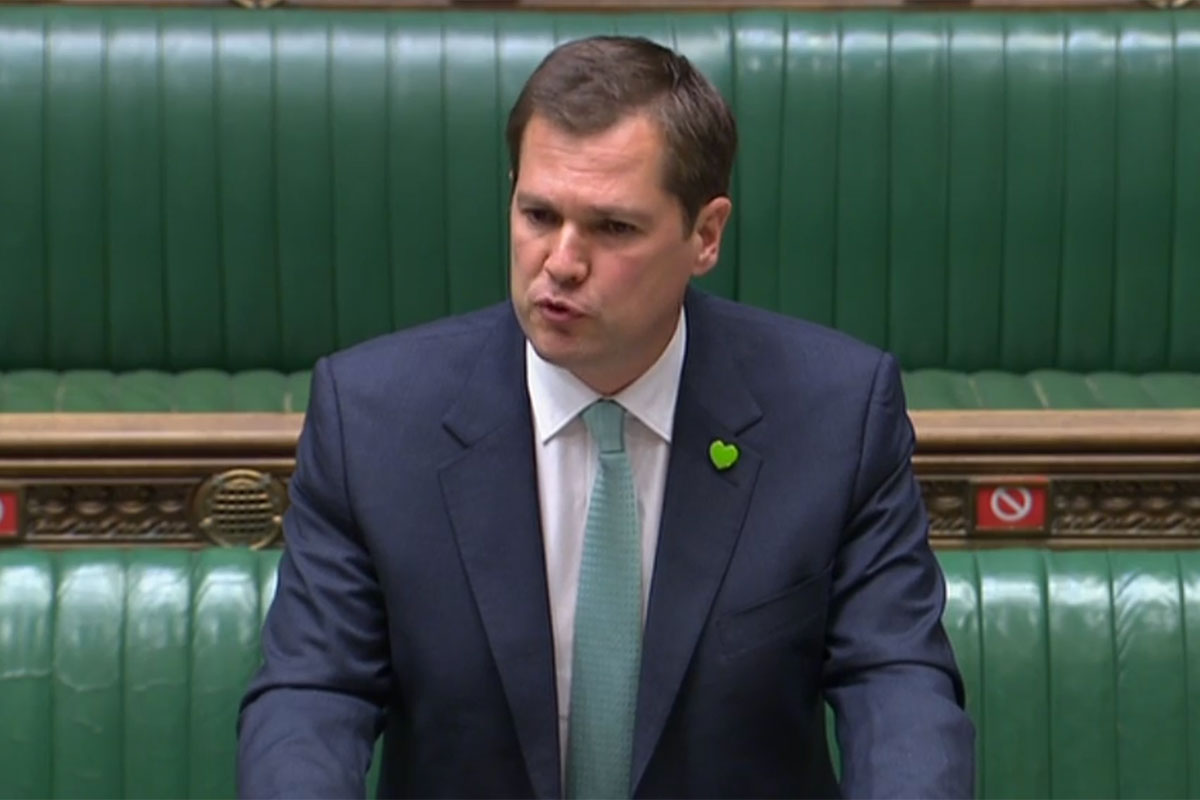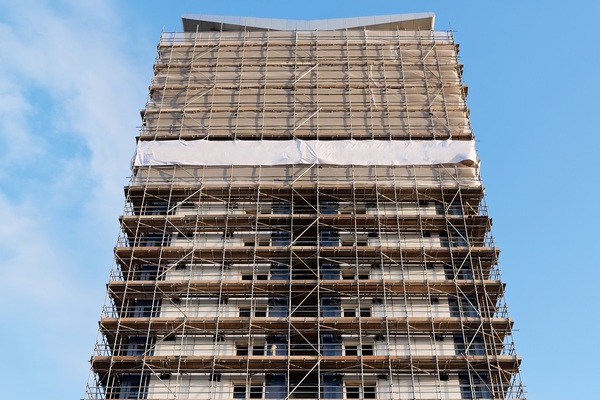You are viewing 1 of your 1 free articles
EWS crisis: leaseholder sees three flat sales collapse after four EWS forms in a year
A leaseholder living in an apartment in London has been left suffering from anxiety after she saw three buyers pull out from potential purchases of her flat due to issues around securing an EWS1 form from her housing association, Inside Housing can reveal.
Shared owner Lisa Reynolds says she has struggled to sleep and fears for her future after three separate buyers pulled out of the purchase of her flat due to delays around receiving an EWS1 that would be accepted by banks.
In total, Ms Reynolds has had three different EWS1 checks on her building near Shoreditch, east London, which is owned by Peabody, and received four different forms, two of which were rejected by the banks when buyers attempted to secure mortgages to purchase her home.
The aborted sales also meant that Ms Reynolds has now missed out on buying a new home after a property she reserved with another developer had been given to somebody else due to her sale taking too long.
Ms Reynolds’ account is the latest story in a series of pieces being run by Inside Housing this week highlighting the issue with the EWS1 system that is currently causing chaos and confusion in the UK flat sale market.
The EWS1 process was created by the Royal Institution of Chartered Surveyors (RICS) and supported by the government back in December 2019. It requires a qualified professional to inspect a building’s external wall and sign a form that rules whether flammable materials are present on the external wall of a building, meaning it requires remedial work, or whether no remedial work is needed and a sale can progress.
However, the high demand and lack of professionals to carry out the checks has meant huge delays in leaseholders being able to secure checks. For those who are able to get checks, the lack of clarity over who can carry them out has meant many EWS1 assessments have had to be repeated on buildings, in some cases resulting in different ratings.
Ms Reynolds began trying to sell her home last February in a bid to move into a bigger property. After her prospective buyer was asked for an EWS1 form, Peabody assured Ms Reynolds that it had an EWS1 form for the building that met requirements. The form that Peabody gave to Ms Reynolds rated the building as B1, which means that while some combustible materials are present on the building, the fire risk is low and sales can proceed.
However, the buyer saw attempts to secure a mortgage from two different banks rejected, with the banks saying that the professional that signed off the EWS1 for Peabody was not correctly qualified. The buyer eventually pulled out in May.
RICS EWS1 guidance states that an EWS1 form can only be signed off as B rated if the person filling out the form is a chartered fire engineer. The majority of banks do not accept forms that do not adhere to this rule.
Latest research from the Building Safety Register has found that as many as one in four checks may not have a valid signatory according to the latest RICS guidance.
A second buyer for Ms Reynolds’ flat was found in May 2020, with Peabody once gain assuring her that the EWS1 form could be used. Again, the second buyer could not secure a mortgage due to the qualifications of the signatory on the form and pulled out.
After the two failed sales, and desperate to move due to Ms Reynolds and her partner reserving a house on another site, the couple put their flat on the market again, this time reducing the cost by £50,000.
After a third buyer saw two mortgage applications rejected again by banks, Peabody confirmed to Ms Reynolds that the first EWS1 check was not valid with new guidance, and it would be securing a new EWS1 check.
A second EWS1 check was then carried out by a new company earlier this year, producing a B1 rating.
However, it was once again rejected by the banks due to the new operative not being a chartered fire engineer, as the RICS guidance states.
After the latest rejection, Peabody contracted in a chartered engineer to complete a check on the building, the third of the year, and this was carried out in February this year. It gave the building a B1 rating.
However, even then the EWS1 form received by Ms Reynolds had an incorrect postcode on it, meaning a corrected EWS1 form had to be issued, Ms Reynolds’ fourth in 12 months. This was done by Peabody on the day it was notified.
Unfortunately for Ms Reynolds and her partner, this correctly completed EWS1 form came just a few weeks after the buyer confirmed that she was pulling out of the transaction, citing the delays and confusion caused in trying to secure an adequate EWS1 form.
Ms Reynolds told Inside Housing that it had been a really tough 12 months for the couple and on top of the disappointment of seeing the sales fall through, they had had to pay solicitors fees four times – three times on the sale and once for the purchase of the home they missed out on.
She said: “At the age of 33, a family home and starting a family is the next chapter for us and this is yet another thing we have been forced to put on hold.
“The year has been full of sleepless nights thinking about the future and being stuck in a one-bed flat for years to come. I’ve suffered from anxiety, especially over the past six months, and we have both for the past year struggled to concentrate with working from home due to this issue taking over our constant thoughts.”
A spokesperson for Peabody said that it appreciated leaseholders’ frustrations but the issues experienced on Ms Reynolds’ block highlighted the huge challenges caused by the EWS1 system, the problems with changing RICS guidance and government advice, and the arbitrary nature of what mortgage lenders and valuers will accept.
It said the first EWS1 check met Ministry of Housing, Communities and Local Government (MHCLG) guidance and was deemed acceptable by many lenders at the time, but this changed after the publication of the government’s consolidated advice notes and the delays to the new forms were partly due to shortage of fire engineers in the UK.
They added: “The problem over the course of 2020 was to do with mortgage lenders’ interpretation of RICS guidance, not any failure on Peabody’s part to produce an EWS1 form.”
Update at 9:50 on the 20/4/2021 This article was amended to make it clear that the new property the leaseholder had reserved was not on another Peabody site but with a different developer.
Peabody’s full statement
“The issues experienced by leaseholders at the building in question highlight the huge challenges caused by the EWS1 system, the problems with changing RICS guidance and government advice, and the arbitrary nature of what mortgage lenders and valuers will accept. We appreciate people’s frustration with this and apologise if our advice and communications from different teams on these complex issues have not always been clear.
“Following the Grenfell tragedy, we began to carry out detailed investigations of external walls in line with the emerging and changing government advice. Investigations on the three blocks at were completed in December 2019. At that time, we employed a qualified surveyor with extensive fire safety experience and he was able to sign the form on our behalf. This was in line with MHCLG guidance at the time and was deemed acceptable by some lenders.
“The government then issued further advice in January 2020 which meant that new investigations by a chartered fire engineer would be required in order to satisfy lenders. This doesn’t mean that the original form was not valid, and indeed subsequent investigations this year agreed entirely with the outcome and produced the same certification as the original one issued in December 2019. The problem over the course of 2020 was to do with mortgage lenders’ interpretation of RICS guidance, not any failure on Peabody’s part to produce an EWS1 form.
“By January 2020, we had developed a prioritised programme of investigations based on safety risk alone. As the three blocks at the development were designated low risk, we were unable to commission the new investigations until January this year. This was partly due to the well documented shortage of chartered fire engineers, the length of time it takes to investigate a building in order to make the assessment, and the number of buildings we had to assess. All three blocks now have a new EWS1 form signed off by chartered fire engineering consultants. The blocks have separate postcodes so there was an administrative error which was rectified on the same day it came to our attention.
“In summary, we know this has been a really difficult time for leaseholders wanting to sell their property. There have been three valid EWS1 forms issued by competent professionals for the blocks. The new forms were only required due to a change in guidance and took some time because we had to prioritise our buildings on the basis of safety risk alone. The problems throughout 2020 were as a result of the changed advice, the developing RICS guidance and the impact that had on lenders’ acceptance of building safety assessments from December 2019 onwards.”
Sign up for our fire safety newsletter
Already have an account? Click here to manage your newsletters













